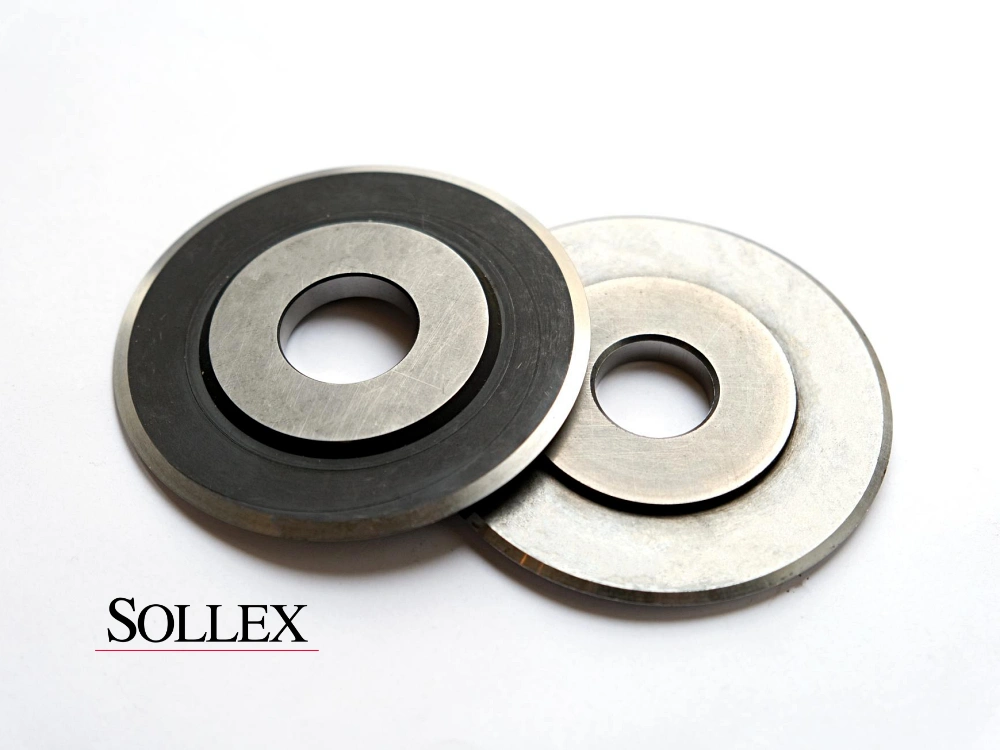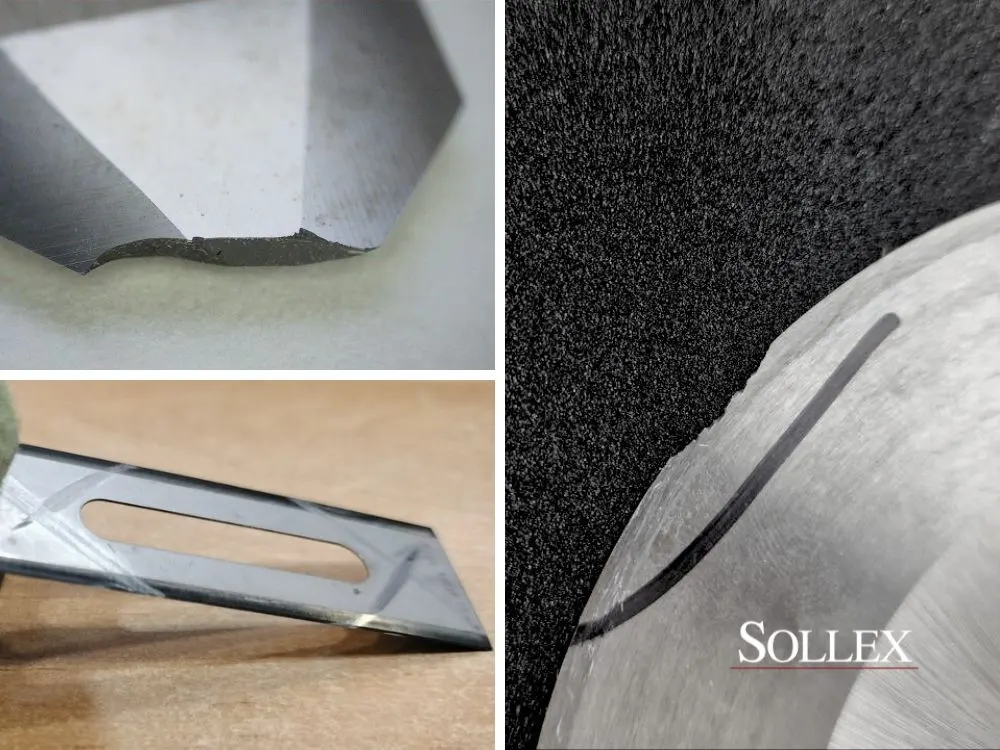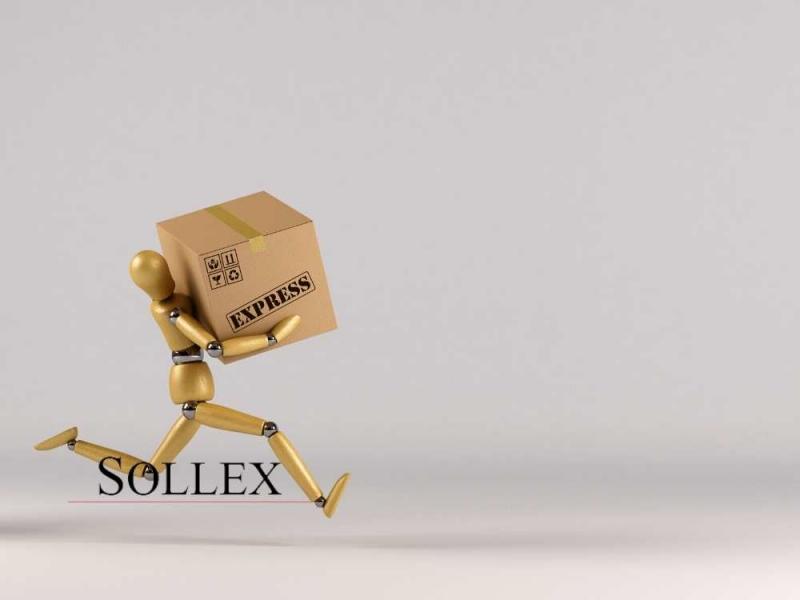Problems & Solutions When Crush Cutting
All industrial cutting methods have a number of strengths as well as a number of limitations. Therefore, when choosing a method of cutting materials, different factors are always analyzed and the method that is suitable in each individual case is chosen. Let's take a look below at what to expect when it comes to crush cutting technique, the advantages and disadvantages, the problems that can be encountered when cutting with crush and score machine knives and also the likely remedies.
Read more about the crush knife cutting method and crush cut knives here “About Crush Cutting & Crush Cut Knives”.
Pros & Cons of Crush Cut Slitting
Like other cutting methods used in the production and processing of flexible materials, especially rolled materials, the crush cutting method has its advantages and disadvantages.
First of all, the crush cutting method is considered to be a more budget-friendly method compared to the shear circular knife method, razor blade cutting or even digital cutting method. Secondly, score and crush cutting is quick to start and maintain, and does not require high-precision settings. Finally, with a rotary crush cutter it is possible to cut and convert materials, such as abrasive papers or fiberglass, that are difficult to cut otherwise.
The disadvantages of the crush cutting method are, first and foremost, the lower quality of the cut. Depending on the material, this can appear as fibers and fluff, and the cut can have a ”pressed or crushed" appearance. In addition, a big cause for concern is the formation of dust when cutting, especially paper materials. In the third place, due to the fact that the knife is under pneumatic pressure and cutting is done under air pressure, it can lead to wear and tear of the knife and anvil shaft in some cases. And lastly, the crush cut or score knife cutting method is not applicable or difficult to implement for high-speed production operations.
Advantages | Disadvantages |
|---|---|
Quick and easy set-up, easy adjustment of the cutting width | Limited scope of use |
Easy operator training and maintenance of the cutting process | Delivers rougher edge cut quality and dust |
Much less costly cutting process than the cutting elements of shear and razor knives | High-speed cutting is complicated |
Cutting abrasive and hard-to-cut flexible materials is possible | Crush knife chipping and anvil roll pitting |
Problems When Crush Cut Slitting
Problem 1. Dust Generating When Crush Cut Slitting
Cutting, for example, paper or paper-like material with crush cut knives has certain challenges. Generally, crush cutting is done by pushing the crush cut or score knife through the web material towards the glass-hard surface of the anvil roll on which the material lies. When the fibers of the paper web are crushed, a very fine powder of shredded paper fibers is formed. Even if the crush knife is new, smooth and well polished, the edge of the paper cut will still have paper dust. The dust generated used to be quite acceptable, but in today's high-speed printing and automatic packaging machines, the dust accumulates faster and causes machine breakdowns. As a result, crush slitting is becoming less and less acceptable for paper processing and converting and circular knives and shear cutting knives are more suitable. Dust collection systems are available to control dust generated during cutting, as well as other methods to reduce dust generation.
Problem 2. Knife Chipping & Roll Grooving When Crush Cut Slitting
Chips on the cutting edge of the circular knife, leading to premature knife wear, and also grooves in the anvil roll are the most common crush cutting concerns. Grooving of the anvil roll as well as chipped cutting edge of the knife result in a poor cut edge quality and material spoilage.
Grooves and knife edge chips can form due to a number of reasons, e.g. if the hardness of the shaft and knife is incorrectly matched in this case, incorrect selection of steel material and hardening, wrong selection of components for cutting the selected web material or e.g. excessive air pressure and sudden changes in the air cylinder of the holder.
There is a rule of thumb that the anvil roller should be slightly harder than the circular knife to avoid the problems mentioned. A general recommendation for knife hardness can range from 58 to 62 Rc, for anvil roll from 62 to 66 Rc. This implies that the hardness of the crush cutter blades should be about 4-6 points lower. But balance is also important here, find the "golden ratio" in your case.
Grooved anvil rolls lead to various problems such as early knife wear, material spoilage, and poor cutting edge quality. The maximum permissible groove depth in the roll is 0.05 mm. If the anvil shaft is worn and has formed gouges, it can be ground (only a limited number of times, as grinding reduces the hardness of the shaft) or completely replaced.
In addition to the reasons listed above for the formation of chips on crush knives, there are factors such as a too small radius of the knife edge. Read more about this in our article here.
Problem 3. Poor Cut Edge Quality
The quality of the edge is highly dependent on the material being cut, the radius of the knife cutting tip, blade profile and cutting angle, knife air pressure, nip forces and the quality of the anvil roll. Depending on the web's physical properties, the cutting material may crumble, break, extrude or wrinkle if the wrong parameters are set.
Poor cutting results in the form of debris and dust, uneven edges, and cracks can occur as a result of improperly selected above mentioned parameters. For example, when talking about nip force, composite, paper and non-woven materials, which are the most suitable for cutting with a crush knife, require a nip force in the range of 50000-150000 psi, while for laminated and multilayer materials, aluminum foil this value can be as high as 200000 psi.

In addition to the nip force, a knife tip radius has a significant value. As the crush cutting requires brute force from a pneumatic knife holder to push the circular knife blade through the material towards the hardened anvil roll, the blade radius and the choice of cutting angle play a significant role in the efficiency and quality of the cut in crush cutting. All score and crush cutting knives should have a small radius at the tip, rather than a pointed tip that will snap as it rotates against a hardened shaft. The quality of the cut is again defined by the radius and angle of the blade tip. Smaller radius will produce less dust with a cleaner cut, but will result in shorter knife life.
Selecting a crush knife and its characteristics is not easy, and most often requires tweaks and changes in knife parameters, knife air pressure, cutting speed, knife profile and tip radius, to get the best results.
___
Sollex is a Swedish supplier of industrial knives and machine blades! We have cutting products with cutting-edge technology and performance that improve manufacturing and converting processes and solve problems. With the right knives and blades you can get simplified maintenance, time savings and an improved end product.
You are welcome to contact us with your questions:
Company name: Sollex AB
Customer service and orders: order@sollex.se Telephone: +4635–15 75 00 Address: Box 5161, 200 71, Malmö, Sweden





